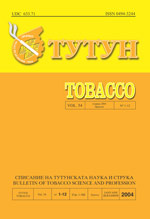|

|
|
|
|
|

|
MORPHOLOGY AND BIOLOGY OF PARAGUS QUADRIFASCIAT US Vesna Krsteska University”St.Kliment Ohridski»-Bitola, Scientific Tobacco Institute-Prilep, Kicevskа bb 7500 Prilep. Republic of Macedonia.e-mail: vkrsteska@yahoo.com
ABSTRACT P. quadrifasciatus is an obligate aphidophagous species and it has an important role in biological control of aphids in natural agroecosystems. In all years of our investigations it was recorded as predator on M. persicae in tobacco fields. This species is among the smallest syrphid flies. The imagos considerably short and dark. The abdomen is black and its first and second segment are also black. The other abdominal segments have visible yellow-white lateral stripes. In laboratory conditions the adults live 6 - 7 days. Females lay their eggs singly on the underside of tobacco leaves, among the aphid colonies. Eggs are ovate, cream-colored, 0.5 - 0.6 mm long. The embryionic development lasts 3 days. Immediately after hatching, larvae are almost colorless to light beige, with denticulate body. Later, the color turns to brown, with expressed thorns on the segments. Larvae kill a great number of aphids. Their greed increases during the second, and particularly during the third larval stage. Their larval stage average lasts 8 days. Pupae are yellowish-brown and prickly and the duration of pupal stage is about 5-7 days. According to our investigations, the growth of one generation from egg to imago was 16-19 days.
Key words: Surphid flies, Paragus quadrifasciatus, aphids, M. persicae |
